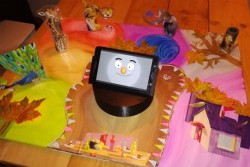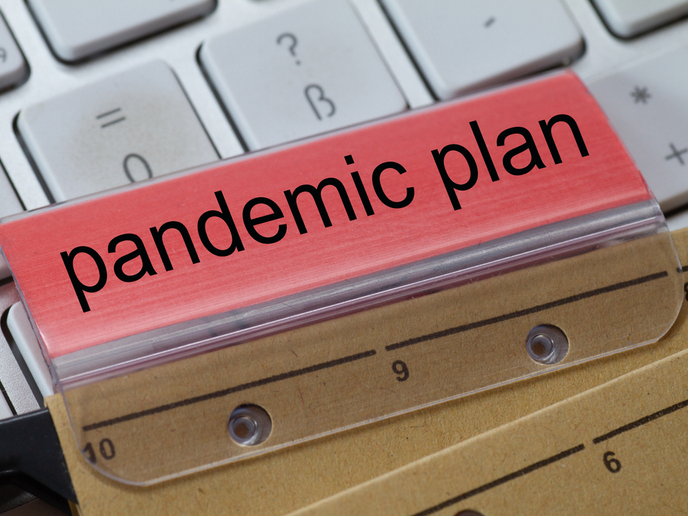Robots go to school
Classrooms today are becoming more and more hi-tech with interactive boards, laptops and web-based learning tools. Robots are also making their way into the curriculum. A community of surface-bots for storytelling To usher in a new age of interactive learning, the EU-funded H2020 COBOTNITY project developed an affordable community of hybrid artificial agents called surface-bots. To be used in collaborative creative storytelling, they could help teachers to stimulate creative thinking and foster social awareness in children. Surface-bots consist of a tablet attached to a portable robotic platform, allowing them to move while simultaneously exhibiting numerous facial expressions. They can also articulate short verbal cues and display an assortment of visual assets. As demonstrated by the project, a typical play session with children in the classroom can include a variable number of surface-bots that are connected by a robotic operating system (ROS) overlay network, via WiFi. Aided by the ROS, dynamic control of the surface-bots enables content creation or story reenactment. The importance of the project, explains main project researcher Dr Alejandro Catala, lies in its capacity to strengthen and promote a change in the educational landscape: from occasional supporting tools at school to actual creative learning educational models in Europe. “We are exploring how innovative technology can be used in reshaping education for 21st century skills.” Valuable results Results from the project are mainly related to assembling physical prototypes with affordable hardware and flexible software that supports the studies and pilots. One substantial outcome was an expandable research platform where system components can be reused and adapted to investigate a variety of experimental interactive solutions, not only throughout the duration of the project, but also in the future. Valuable knowledge on the role that interactive small robots can have in storytelling activities was also acquired during the experiments. The researchers found that machines cannot fully respond and solve the whole range of physical interactions yet. Design of the interaction as a collaborative activity between artificial agents and users also needs to be addressed. This way, the behaviour of the agents can influence user’s actions and performance. Challenges along the way: Kids will be kids The human aspect of the research created challenges simply because the main users of the surface-bots are children. However, as Dr Catala states, the “process was rewarding, even if we didn’t get the expected results or fully workable data, as playing with our technology was a fun experience for the children, exposing them to unaccustomed digital systems and feeding their curiosity.” Throughout the duration of the project, technical and research-related issues were also encountered. The process of building an affordable and expandable IT system that enables child-robot interactions was an obstacle. The system should use cheap robotic bases and tablets, 3D printed cases and commodity webcams. The goal is to eventually transcend a purely research-oriented environment, and implement surface-bots at schools and households with a limited budget. Child-robot symbiosis of the future According to Dr Catala, interactive mediated technology needs to be designed to overcome current limitations. “There isn't a plan for immediate commercialisation,” he explains. “More research is needed to optimise the underlying activities and provide more autonomous intelligent agents to support the labour of teachers. However, we are facilitating its introduction at schools by means of further pilot experiences, in which bachelor and master students are expanding the project results and experimenting with the technology.” COBOTNITY foresees a symbiotic collaboration between agents and users in activities that possess shared or common goals. “Currently, we are working towards co-creation with agents, in which users and machines must cooperate to achieve common creative goals,” says Dr Catala. Summarising, Dr Catala adds, “The next steps for the project include further development of an open robust platform to experiment and explore the issues addressed and provide more agent autonomy to facilitate deployment and eventual commercialisation.”
Keywords
COBOTNITY, surface-bots, education, robots, creativity, story







